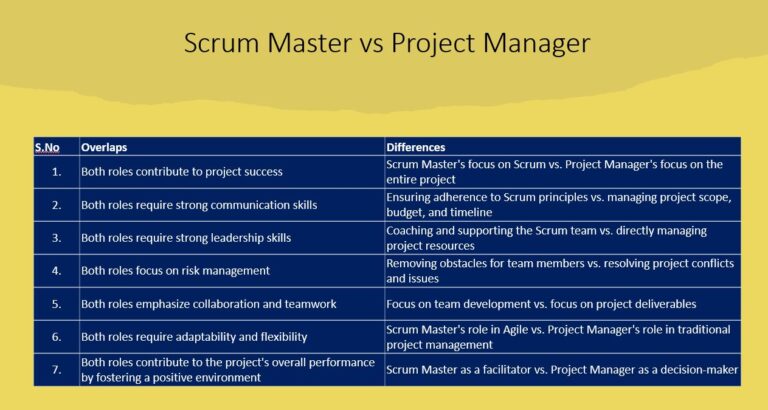The Ultimate Guide To Understanding 7 Lean Principles

In 2023, businesses face significant challenges in remaining competitive and profitable. To stay ahead of the curve, many organizations have adopted 7 principles of Lean principles as a way of improving their operations and reducing waste.
Lean principles focus on eliminating waste, building quality in, creating knowledge, deferring commitment, delivering fast, respecting people, and optimizing the whole. In this blog, we’ll explore how companies can implement the seven principles of Lean principles in 2023 to achieve success.
1 – Eliminate Waste

The first Lean principle is to eliminate waste. Waste can take many forms, including overproduction, waiting, defects, overprocessing, excess inventory, unnecessary motion, and unused talent. By using lean development principle and identifying and eliminating waste, companies can reduce costs, increase efficiency, and improve customer satisfaction.
In 2023, businesses can use technology to help them identify waste in their operations. For example, using data analytics tools, companies can analyze their production processes to identify areas where they are wasting time or resources. They can then make changes to their processes to eliminate this waste and improve efficiency.
Another way to eliminate waste is to adopt a Just-In-Time (JIT) production cycle or lean manufacturing system. JIT manufacturing involves producing goods only when they are needed, which reduces inventory and eliminates waste associated with overproduction. JIT can also help companies respond more quickly to changes in demand, which is critical in today’s fast-paced business environment.
2 – Build Quality In
The key principle of second Lean principle is to build quality in. Building quality into products and services reduces defects, improves customer satisfaction, and reduces the cost of rework. In 2023, companies can use technology to build quality into their products and to deliver quickly and services.
For example, using machine learning algorithms, companies can identify patterns in customer complaints and use this information to improve the quality of their products. They can also through software development use sensors and other IoT devices to monitor the performance of their products in real-time and identify issues and solve problems before they become major problems.
Another way to build a quality assurance back into products and services is to involve employees in the development team quality control process. By empowering employees to identify and solve quality issues, companies can improve the quality of their products and services while also improving employee engagement and satisfaction.
3 – Create & Share Knowledge

The third Lean principle is to create knowledge. Creating knowledge involves continuously learning and improving processes and products. In 2023, businesses can be applying lean principles to use technology to create knowledge more effectively.
For example, using Big Data analytics tools, companies can analyze vast amounts of data to identify patterns and trends that can inform their decision-making. They can also use machine learning algorithms to identify opportunities for process improvement and product innovation.
Another way to create knowledge is to implement a continuous improvement program. This program involves regularly evaluating processes and products to identify opportunities for improvement further development. By creating a culture of continuous improvement, companies can stay ahead of the curve and remain competitive in today’s fast-changing business environment.
4 – Defer Commitment (Just in time delivery)

The fourth Lean principle is to defer commitment. Defer commitment means not making decisions until the last possible moment. This critical principle allows companies to remain flexible and adapt to changes in the market.
In 2023, companies can use technology to defer commitment more effectively. For example, using predictive analytics tools, companies can forecast demand more accurately, which allows them to make better decisions about production levels and inventory management.
Another way to defer commitment is to adopt an Agile lean methodology approach to product development. Agile lean software development involves breaking down projects into smaller, more manageable tasks and delivering working prototypes to customers quickly. By deferring major decisions until later in the development process, companies can adapt to changes in the market and customer feedback more easily.
5 – Deliver Fast (& get early feedback)
The fifth Lean principle is to deliver fast. Delivering fast means reducing lead times and getting products to market quickly. In 2023, companies can take seven key principles to have lean teams use technology to deliver fast more effectively.
For example, using automation and robotics in manufacturing and logistics can help companies reduce lead times and increase efficiency. Adopting a digital supply chain can also help companies respond more quickly to changes in demand and reduce delivery times.
Another way to deliver fast is to adopt a DevOps approach to the software development process.
DevOps involves breaking down the barriers between development and operations teams, allowing companies to deliver software updates and new features more quickly and with fewer errors.
6 – Power To People

The sixth Lean principle is to respect people. Respecting people means treating employees, customers, and suppliers with dignity and respect. In 2023, companies can use technology to respect people more effectively.
For software development teams for example, using virtual and augmented reality technologies, companies can provide employees with training and development opportunities that are more engaging and immersive. They can also use chatbots and other AI-powered tools to provide customers with personalized service and support.
Another way to respect customer value and people is to create a diverse and inclusive workplace. By embracing diversity and inclusion, companies can benefit from the unique perspectives and experiences of their employees, which can lead to innovation and improved decision-making.
7 – Optimize the Whole

The seventh Lean principle is to optimize the whole value and final product delivery. Optimizing the whole means looking at the entire value stream, from suppliers to customers, learning process and identifying opportunities to improve efficiency and reduce waste.
In 2023, companies can use technology to optimize the whole more effectively. For example, using blockchain technology, companies can track products and materials throughout the supply chain, which can help them identify areas of waste and inefficiency.
They can also use data analytics tools to analyze customer behavior and preferences, which can inform product development and marketing decisions.
Another way to optimize the whole principles of lean software is to adopt a systems thinking approach to project management. Systems thinking involves looking at the entire organization as a system and identifying how changes in one area can affect other areas.
By taking a holistic view of the organization, companies can identify opportunities for improvement and reduce waste and inefficiency.
Wrap Up
In conclusion, implementing the seven Lean principles can help companies achieve success in 2023. By eliminating waste, building quality in, creating knowledge, deferring commitment, delivering fast, respecting people, and optimizing the whole, companies can improve efficiency, reduce costs, and improve customer satisfaction.
By using the fundamental principles of lean development leveraging technology and adopting new approaches to product development and operations, companies can stay ahead of the curve and remain competitive in today’s fast-paced business environment.
Frequently Asked Questions
What are the benefits of implementing the 7 Lean principles?
Implementing the 7 Lean principles can help companies achieve several benefits, including improved efficiency, reduced costs, and increased customer satisfaction. By eliminating waste, building quality in, and optimizing the whole value stream, companies can streamline their operations and reduce the time it takes to bring products and services to market.
Additionally, by creating knowledge, deferring commitment, and respecting people, companies can foster a culture of continuous improvement and innovation, which can help them stay ahead of the competition.
How can technology help companies in their lean software development process?
Technology can play a significant role in helping companies implement the 7 Lean principles. For example, automation and robotics can help companies eliminate waste and increase efficiency in manufacturing and logistics operations.
Digital supply chain tools can help companies respond more quickly to changes in demand and reduce lead times. And data analytics and AI-powered tools can help companies optimize their operations and improve customer experiences.
How can companies create knowledge while impleneting lean development principles?
Creating knowledge is an essential aspect of implementing Lean principles. To create knowledge, companies can use tools like virtual and augmented reality to provide more engaging and immersive training and development opportunities for employees.
They can also foster a culture of continuous learning and improvement by encouraging employees to share knowledge and best practices. Additionally, companies using lean thinking can invest in research and development to develop new products and services that meet evolving customer needs.
How can companies respect people?
Respecting people is a key Lean principle that involves treating employees, customers, and suppliers with dignity and respect. To respect people, companies can create a diverse and inclusive workplace that embraces diversity and fosters a culture of inclusion.
They can also use technology like chatbots and AI-powered tools to provide personalized service and support for customers. Additionally, companies can provide employees with opportunities for growth and development, as well as a healthy work-life balance.
How can companies optimize the whole value stream?
Optimizing the whole value stream is a key aspect of implementing Lean principles. To optimize the whole value stream, companies can use tools like blockchain technology to track products and materials throughout the supply chain and identify areas of waste and inefficiency.
They can also use data analytics to analyze customer behavior and preferences, which can inform product development and marketing decisions. Additionally, companies can adopt a systems thinking approach, which involves looking at the entire organization as a system and identifying how changes in one area can affect other areas.
How can companies deliver fast?
Delivering fast involves reducing lead times and increasing efficiency. To deliver fast, companies can use technology like automation and robotics to streamline manufacturing and logistics operations. They can also adopt a DevOps approach to software development, which involves breaking down barriers between software development practices and operations teams and delivering software updates and new features more quickly and with fewer errors.
Additionally, companies can adopt a digital supply chain that enables them to respond more quickly to changes in demand and reduce delivery times.
What is pair programming, and how does it relate to Lean software development?
Pair programming is a software development technique where two developers work together on the same codebase. One developer writes the code while the other reviews it in real-time, providing feedback and catching errors as they occur. Pair programming is an example of how Lean software development focuses on reducing waste by eliminating defects early in the development process.
Pair programming also embodies the Lean principle of respecting people by creating a collaborative work environment and fostering knowledge sharing.
What is value stream mapping, and how is it used in Lean software development?
Value stream mapping is a tool used in Lean manufacturing and Lean software development to visualize and analyze the flow of materials, products, and information through the value stream. Value stream mapping helps identify areas of waste and inefficiency, such as context switching, and can be used to identify opportunities for improvement.
In Lean software development, value stream mapping can be used to identify areas of waste in the development process and to optimize the continuous flow of work from idea to deployment.
How does the Toyota Production System relate to Lean software development?
The Toyota Production System is a manufacturing methodology developed by Toyota that emphasizes continuous improvement and waste reduction. The term Lean manufacturing was coined to describe the principles and practices of the Toyota Production System. Lean software development borrows heavily from the principles of the Toyota Production System and applies them to software development.
Both Lean manufacturing and Lean software development focus on creating value for the customer while minimizing waste and eliminating defects. Principles like last responsible moment, test-driven development, and pair programming are all examples of Lean software development practices that are based on principles from the Toyota Production System.
Article also to be published on author’s Medium.com profile
More from the author on RTE, Agile coach, Scrum Master / Product Owner / Why you need a Career Coach / Managing Managers / IT Career switch.





